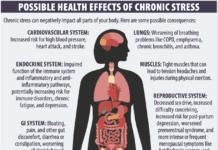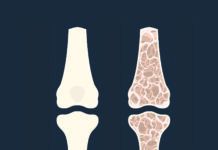More than 100 million adults in the U.S. have diabetes or prediabetes. “Nutrition and weight loss are powerful tools in diabetes management,” says Richard Siegel, MD, co-director of the Diabetes and Lipid Center at Tufts Medical Center. Diet and lifestyle go a long way in preventing type 2 diabetes, managing the disorder, or even reversing its onset.
No One-Size-Fits All: In 2019, the American Diabetes Association (ADA) released an updated consensus report, Nutrition Therapy for Adults with Diabetes or Prediabetes. An expert panel reviewed over 600 research articles published in the last five years to determine which dietary patterns work well for people with diabetes. The research showed that there is no one ideal eating plan for the prevention or management of diabetes. Each individual’s body responds differently to different types of foods and diets. Additionally, people with prediabetes and diabetes have a wide variety of cultural backgrounds, personal preferences, socioeconomic circumstances, and additional health conditions that impact their dietary tastes, wants, and needs. Fortunately, there are many food choices and eating patterns that can help improve or maintain blood sugar targets and health goals.
There is no single “diabetes diet.” The American Diabetes Association offers these tips for eating to manage (or prevent) diabetes:
- Follow Mediterranean-style, vegetarian, vegan, or low-carb eating plans, all of which have been shown to help with blood sugar control (as measured by A1C)
- Choose whole, unprocessed foods over processed foods
- Eat non-starchy vegetables (a group that includes most vegetables, including carrots, broccoli, cauliflower, green beans, greens, and bell peppers) instead of starchy ones (potatoes, peas, and corn)
- Limit or avoid foods with added sugars and refined grains, such as cookies, cakes, muffins, non-whole-grain breads and crackers, and other sweets and baked goods
- Drink water instead of soda or other sugary beverages (including 100% fruit juice)
- Find a diet that will work for you long term to manage your blood sugar levels—everyone’s body is different
- Aim to lose at least five percent of your current weight if you have overweight or obesity
Key takeaways from the ADA consensus report include:
- Many different eating patterns can help with diabetes management, including a Mediterranean-style dietary pattern and vegetarian or vegan diets. Some research shows that low-carbohydrate eating patterns can benefit people with diabetes and prediabetes. There is no one definition of a “low carb” diet, and individuals with diabetes choosing a low-carb diet should beware of the danger for low blood sugar.
- Weight loss works. Losing even modest amounts of weight can improve blood sugar and other diabetes outcomes in both type 1 and type 2 diabetes. Start by aiming to lose five percent of your current weight if you have overweight or obesity. Lifestyle changes like portion control; being more physically active; and swapping out foods with added sugars and refined grains for plant foods like beans, fruits, and vegetables are a healthy approach to weight loss.
Food swaps reduce risk for other diseases. People with diabetes are at increased risk for cardiovascular and kidney disease. Swapping out unhealthy choices (like high-saturated-fat butter and beef) for healthier options (like unsaturated-fat-rich olive oil and fish) can reduce risk.
New Tools: To help address these points, the ADA has developed several new tools. The Diabetes Food Hub, an online tool with recipes that meet ADA’s nutrition guidelines, healthy living tips, and an interactive meal planner and grocery list generator, is designed to make it easier for people to make sustainable healthy dietary changes.
“What Can I Eat?” is a new nutrition-focused diabetes self-management support program targeting adults living with type 2 diabetes and their families and caregivers. The program consists of five interactive 90-minute sessions. “Instead of diving into the complexities of nutrition science, each session offers solutions to the real challenges people are facing on a daily basis in making food choices, grocery shopping, cooking, eating out, and more,” says Shamera Robinson, associate director of nutrition for the ADA. The program is currently offered in a handful of locations but is being rolled out to communities across the nation.
The ADA strongly recommends people with diabetes or prediabetes get help from a registered dietitian nutritionist (RDN) or certified diabetes educator (CDE), in putting together a diet that meets their individual needs.

























Resources link does not work.